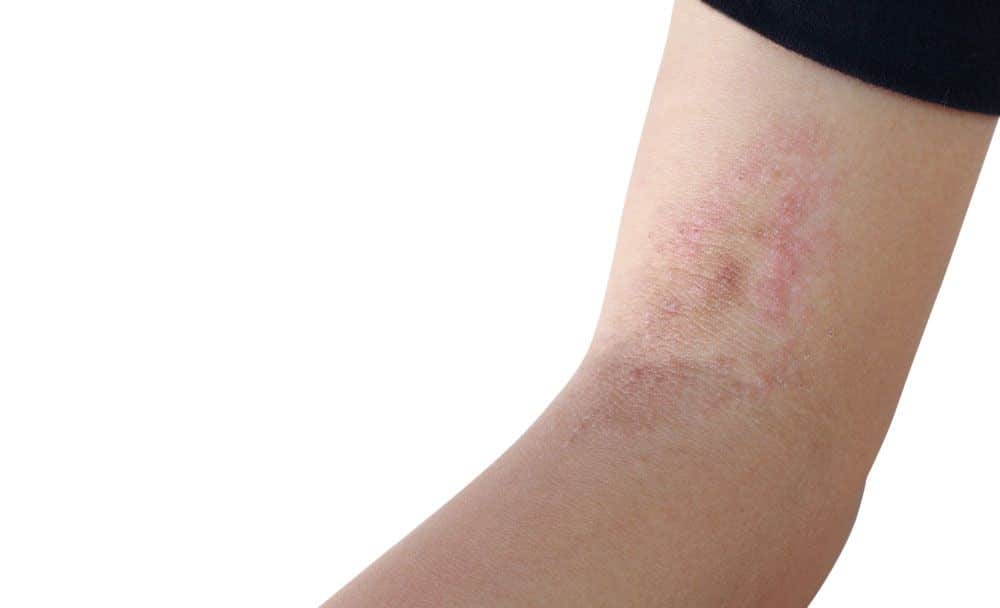Fungal infections, also known as mycoses(plural for Mycosis), are common health conditions caused by different types of fungi. Fungi are microorganisms that can live on the skin, in the air, soil, water, and even in the human body.
While many types of fungi are harmless or even beneficial, some can cause infections when they overgrow or invade healthy tissues. Fungal infections can affect various parts of the body, including the skin, nails, hair, mouth, throat, lungs, and genitals. [1] In this article, we will discuss what fungal infections are, their causes, types, symptoms, and treatment options.
What Causes Fungal Infections?
Fungal infections are caused by different types of fungi, including yeasts, moulds, and dermatophytes. These fungi can enter the body through various means, such as direct contact with infected individuals or contaminated surfaces, inhalation of spores in the air, ingestion of contaminated food or water, or even through the bloodstream. Some common risk factors that can increase the likelihood of developing fungal infections include:
Weakened immune system: Individuals with weakened immune systems, such as those with HIV/AIDS, cancer, diabetes, or taking immunosuppressive medications, are more susceptible to fungal infections. [2]
Warm and moist environments: Fungi thrive in warm and moist environments, such as sweaty shoes, damp clothes, locker rooms, public swimming pools, and tropical regions, increasing the risk of fungal infections. [2]
Poor hygiene: Poor hygiene practices, such as not washing hands regularly, not changing sweaty clothes, or not drying the skin properly, can create favourable conditions for fungal growth.[2]
Trauma to the skin: Any damage to the skin, such as cuts, scrapes, or burns, can provide an entry point for fungi to invade and cause infections.[2]
Sharing personal items: Sharing personal items, such as towels, combs, or clothes, with an infected person can spread fungi and lead to infections.[2]
Types of Fungal Infections
There are several types of fungal infections, categorized based on the part of the body they affect. Some common types of fungal infections include:
1. Skin infections
These are the most common types of fungal infections and can affect any part of the skin, including the feet (athlete’s foot), groin (jock itch), body (ringworm), and scalp (tinea capitis). [3]
2. Nail infections
Fungal infections of the nails, also known as onychomycosis, can cause thickened, discolored, and brittle nails. [4]
3. Oral infections
Candidiasis is a fungal infection caused by a fungus called Candida that can affect the mouth and throat, causing conditions such as oral thrush. It appears in the form of creamy white patches on the tongue, inner cheeks, and roof of the mouth. [5]
4. Respiratory infections
Fungi can also invade the respiratory tract with a condition known as Pneumocystis Pneumonia, causing conditions such as fungal pneumonia, which can be severe in individuals with weakened immune systems. [6]
5. Genital infections
Both males and females can develop fungal infections in the genital area, such as yeast infections in females (vaginal candidiasis) and balanitis in males (inflammation of the foreskin and head of the penis). [7] [8]
Symptoms of Fungal Infections
The symptoms of fungal infections can vary depending on the type of infection and the part of the body affected. However, some common symptoms of fungal infections may include: [9]
- Itching, redness, and rash on the skin or affected area.
- Pain, swelling, and inflammation.
- Discolouration and thickening of nails.
- White, creamy patches in the mouth or throat.
- Discharge, itching, and burning in the genital area.
- Difficulty breathing, coughing, and chest pain in respiratory infections.
- Unpleasant odour from affected areas, such as feet or groin.
- Hair loss and scaling of the scalp in fungal infections of the scalp.
It’s important to note that the symptoms may vary depending on the individual and the severity of the infection. Some fungal infections may be asymptomatic or present with mild symptoms, while others can cause significant discomfort and pain.
Treatment of Fungal Infections
The treatment of fungal infections depends on the type, severity, and location of the infection, as well as the overall health of the individual. Mild fungal infections may resolve on their own or with over-the-counter antifungal creams, powders, or shampoos. However, for more severe or recurrent infections, prescription medications may be necessary. The most common types of treatments for fungal infections include:
Topical antifungal medications: These are applied directly to the affected area and can include creams, lotions, powders, or shampoos. Topical antifungal medications are commonly used for skin and nail infections. [10]
Oral antifungal medications: These are prescribed medications taken by mouth and are often used for more severe or systemic fungal infections, such as respiratory or systemic fungal infections. [11]
Antifungal nail lacquer: This is a specialized nail polish that contains antifungal medication and is used to treat fungal infections of the nails. [12]
Antifungal mouthwash or lozenges: These are used to treat oral fungal infections and are commonly prescribed for conditions like oral thrush. [13]
Lifestyle changes: Avoiding warm and moist environments, practising good hygiene, changing clothes and towels regularly, and avoiding sharing personal items can help prevent the spread and recurrence of fungal infections.
Prevention of Fungal Infections
Preventing fungal infections is possible by taking certain precautions. Some tips to prevent fungal infections include:
Keep the skin clean and dry: Regularly wash and dry the skin, especially in areas prone to fungal infections, such as the feet, groin, and armpits. Use antifungal powders or sprays to keep these areas dry.
Avoid sharing personal items: Do not share towels, combs, brushes, clothes, or shoes with others, especially if someone has a fungal infection.
Wear breathable clothing: Choose loose-fitting clothes made of breathable fabrics, such as cotton, to allow air circulation and reduce moisture on the skin.
Use antifungal products: If you are prone to fungal infections, use antifungal soaps, shampoos, or creams as a preventive measure.
Practice good foot hygiene: Keep your feet clean and dry, wear breathable socks and shoes, and change your socks and shoes regularly, especially after sweating or exercising.
Avoid walking barefoot in public areas: Wear sandals or flip-flops in public pools, showers, locker rooms, and other communal areas to reduce the risk of fungal infections.
Maintain healthy immune system: Eat a balanced diet, exercise regularly, get enough sleep, and manage stress to support a healthy immune system, which can help prevent fungal infections.
FAQs
1. Can I use over-the-counter antifungal creams for all types of fungal infections?
Over-the-counter antifungal creams, powders, or shampoos can be effective for mild fungal infections on the skin, such as athlete’s foot or ringworm. However, for more severe or recurrent infections, or for infections involving other parts of the body, such as nails or mucous membranes, prescription antifungal medications may be necessary. It’s important to consult a healthcare professional for proper diagnosis and treatment of fungal infections to determine the most appropriate treatment option.
2. Can I get a fungal infection from someone else?
Yes, fungal infections can be contagious and spread from person to person through direct skin contact, sharing personal items like towels or shoes, or walking barefoot in public areas. It’s important to practice good hygiene, avoid sharing personal items, and take preventive measures, especially if you have a weakened immune system or are at higher risk for fungal infections.
3. Can I prevent the recurrence of fungal infections?
Recurrent fungal infections can be prevented by taking certain precautions. These may include practicing good hygiene, keeping the affected area clean and dry, avoiding tight-fitting or non-breathable clothing, using antifungal products as recommended by a healthcare professional, and addressing any underlying health conditions that may increase the risk of recurrent infections, such as diabetes or immune system disorders. Following a healthy lifestyle, maintaining a strong immune system, and taking preventive measures can help reduce the risk of recurrent fungal infections.
4. Can I treat fungal nail infections with over-the-counter products?
Fungal nail infections usually require prescription antifungal medications, such as oral medications or antifungal nail lacquer, for effective treatment.
Conclusion
Fungal infections are common and can affect various parts of the body. They can be caused by different types of fungi and may present with different symptoms. Prompt diagnosis and appropriate treatment are essential to effectively manage fungal infections and prevent complications. It’s important to practice good hygiene, wear breathable clothing, avoid walking barefoot in public areas, and maintain a healthy immune system to prevent fungal infections. If you suspect you have a fungal infection, it’s best to seek medical advice from a healthcare professional for proper diagnosis and treatment.
Disclaimer: This article is written from a modern medicine perspective only. Always consult with a qualified healthcare professional for proper diagnosis and treatment of fungal infections or any other health condition.
References:
- About Fungal Diseases | Fungal Diseases | CDC
- Fungal Infections | CDC
- Ringworm | Types of Diseases | Fungal Diseases | CDC
- Fungal Nail Infections | Fungal Diseases | CDC
- Candida infections of the mouth, throat, and esophagus | Fungal Diseases | CDC
- Pneumocystis pneumonia | Fungal Diseases | CDC
- Vaginal Candidiasis | Fungal Diseases | CDC
- Balanitis – StatPearls – NCBI Bookshelf (nih.gov)
- Fungal Infections: Protect Your Health | Fungal Diseases | CDC
- Special Issue: Treatments for Fungal Infections – PMC (nih.gov)
- Candida infections of the mouth, throat, and esophagus | Fungal Diseases | CDC
- Nail fungus: Polish, cream or tablets? – InformedHealth.org – NCBI Bookshelf (nih.gov)
- Effects of chlorhexidine mouthwash on the oral microbiome – ScienceDirect



















